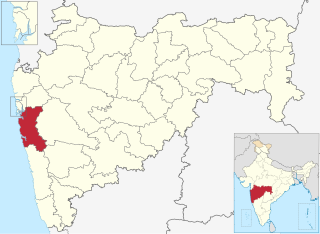A mining accident is an accident that occurs during the process of mining minerals or metals. Thousands of miners die from mining accidents each year, especially from underground coal mining, although accidents also occur in hard rock mining. Coal mining is considered much more hazardous than hard rock mining due to flat-lying rock strata, generally incompetent rock, the presence of methane gas, and coal dust. Most of the deaths these days occur in developing countries, and rural parts of developed countries where safety measures are not practiced as fully. A mining disaster is an incident where there are five or more fatalities.

The collapse of the Hotel New World was a civil disaster that occurred in Singapore on 15 March 1986. The Hotel New World was a six-story building situated at the junction of Serangoon Road and Owen Road in the Rochor district when it suddenly collapsed, trapping 50 people beneath the rubble. 33 people died and 17 people were rescued.

The September 11 attacks of 2001 caused the deaths of 2,996 people, including 2,977 victims and 19 hijackers who committed murder–suicide. Thousands more were injured, and long-term health effects have arisen as a consequence of the attacks. New York City took the brunt of the death toll when the Twin Towers of the World Trade Center complex in Lower Manhattan were attacked, with an estimated 1,600 victims from the North Tower and around a thousand from the South Tower. Two hundred miles southwest in Arlington County, Virginia, another 125 were killed in the Pentagon. The remaining 265 fatalities included the ninety-two passengers and crew of American Airlines Flight 11, the sixty-five aboard United Airlines Flight 175, the sixty-four on American Airlines Flight 77 and the forty-four who boarded United Airlines Flight 93. The attack on the World Trade Center's North Tower single-handedly made 9/11 the deadliest act of terrorism in human history.
The history of Mumbai during the 21st century covers the Indian city of Mumbai in the 21st century, during which the city suffered several terrorist attacks.

On June 29, 1995, the Sampoong Department Store in Seoul, South Korea, collapsed due to a structural failure. The collapse killed 502 people and injured 937, making it the largest peacetime disaster in South Korean history. It was the deadliest non-deliberate modern building collapse until the 2013 Rana Plaza factory collapse in Bangladesh.

Structural integrity and failure is an aspect of engineering that deals with the ability of a structure to support a designed structural load without breaking and includes the study of past structural failures in order to prevent failures in future designs.

The Dar es Salaam building collapse occurred during the early hours of Good Friday on 29 March 2013 when a 16-floor residential apartment building collapsed on a nearby mosque compound, killing 36 people and trapping over 60 under the rubble.
On 4 April 2013, a building collapsed on tribal land in Mumbra, a suburb of Thane in Maharashtra, India. It has been called the worst building collapse in the area. Seventy-four people were killed, while more than 100 survived. The search for additional survivors ended on 6 April 2013.
Shil Phata or Shilphata is an area about 5 kilometres (3.1 mi) south of Mumbra, in the Thane city of Maharashtra under Thane Municipal Corporation, India. Shil Phata is located east of Parsik Hills on the old Mumbai-Pune Road.

The Rana Plaza collapse was a structural failure that occurred on 24 April 2013 in the Savar Upazila of Dhaka District, Bangladesh, where an eight-story commercial building called Rana Plaza collapsed. The search for the dead ended on 13 May 2013 with a death toll of 1,134. Approximately 2,500 injured people were rescued from the building. It is considered the deadliest accidental structural failure in modern human history, the deadliest garment-factory disaster in history and the deadliest industrial accident in the history of Bangladesh.

The 2017 Mumbai flood is the flooding that occurred on 29 August 2017, following heavy rain on 29 August 2017 in Mumbai. Transport systems were unavailable through parts of the city as trains and roadways were shut. Power was shut off from various parts of the city to prevent electrocution. The International Federation of Red Cross and Red Crescent Societies (IFRC) called the South Asian floods one of the worst regional humanitarian crises in years. This event can be compared with the 2005 floods in Mumbai, which recorded 944 mm of rainfall within 24 hours on 26 July.
Widespread monsoon flooding occurred in the South Asian countries of Afghanistan, Bangladesh, India, Nepal and Pakistan from July through September 2017. More than 45 million people were affected by the floods, including 16 million children.

The first case of the COVID-19 pandemic in the Indian state of Maharashtra was confirmed on 9 March 2020.

On 25 August 2020, a building collapsed in Mahad, India killing at least 12 people and trapping at least 60 others.

On June 24, 2021, at approximately 1:22 a.m. EDT, Champlain Towers South, a 12-story beachfront condominium in the Miami suburb of Surfside, Florida, United States, partially collapsed, causing the deaths of 98 people. Four people were rescued from the rubble, but one died of injuries shortly after arriving at the hospital. Eleven others were injured. Approximately thirty-five were rescued the same day from the un-collapsed portion of the building, which was demolished ten days later.
On 1 November 2021, a high-rise block of luxury flats under construction in the neighbourhood of Ikoyi in Lagos, Nigeria, collapsed. At least 42 people died. The government of Lagos State is conducting an investigation.

After over 6,500 people died in flooding in 2020, monsoon floods hit South Asia again in 2021.











